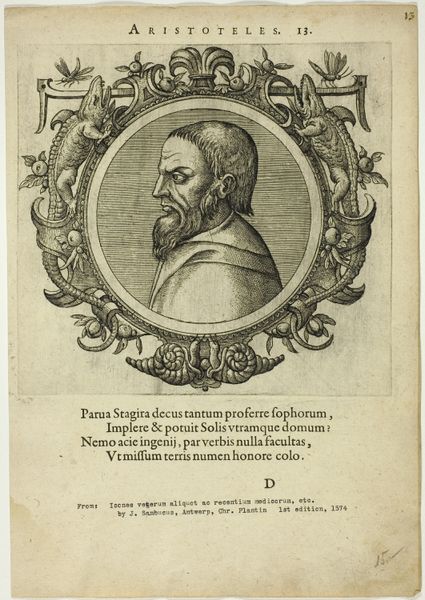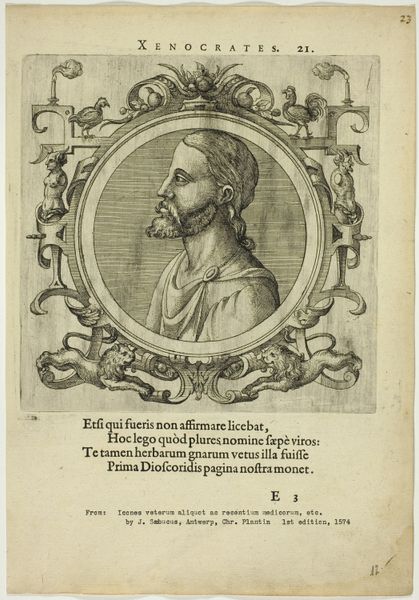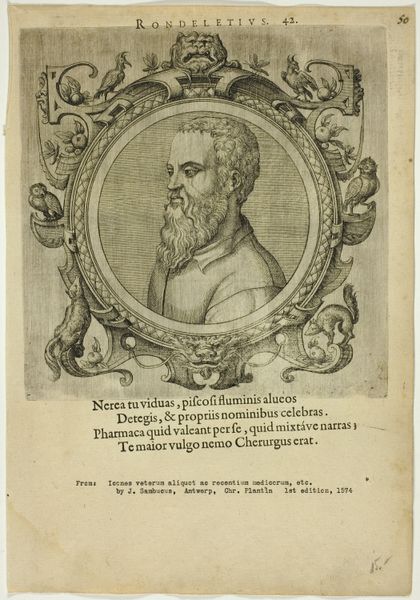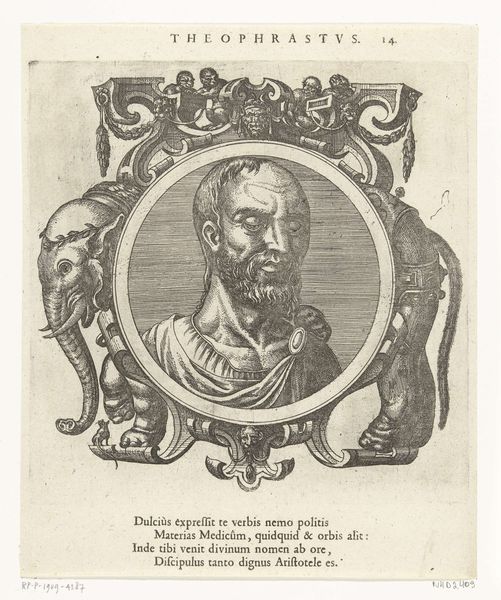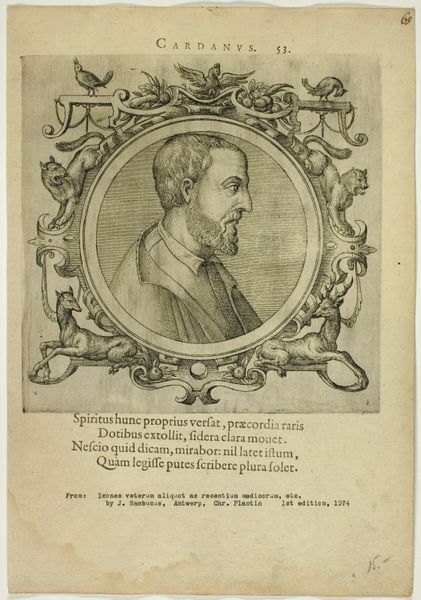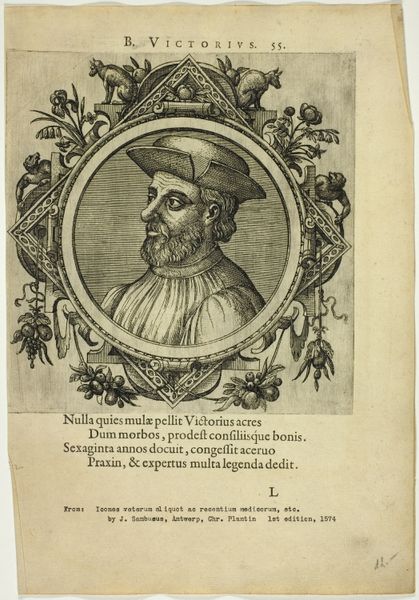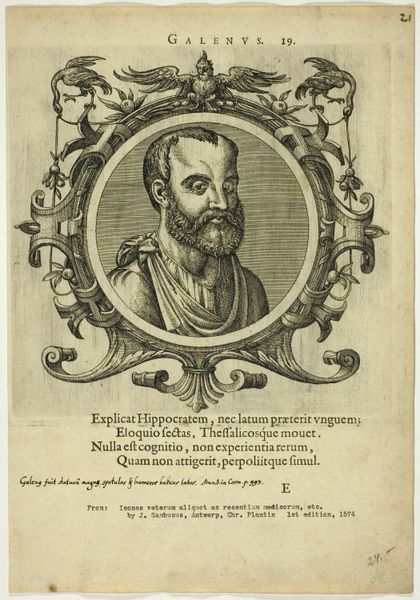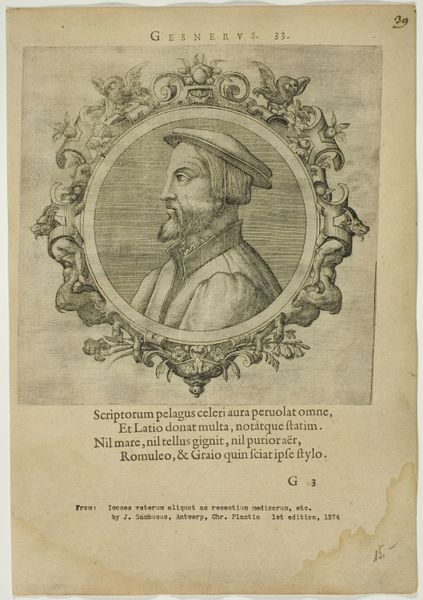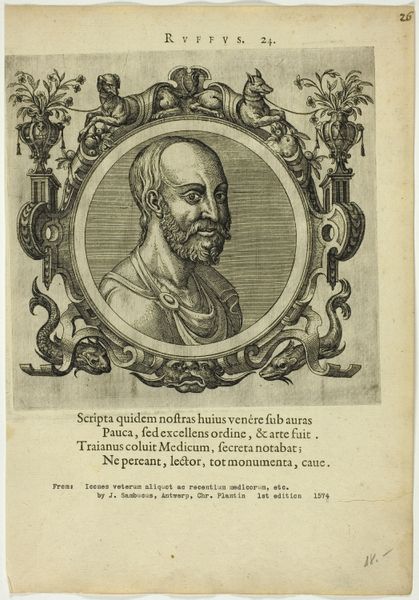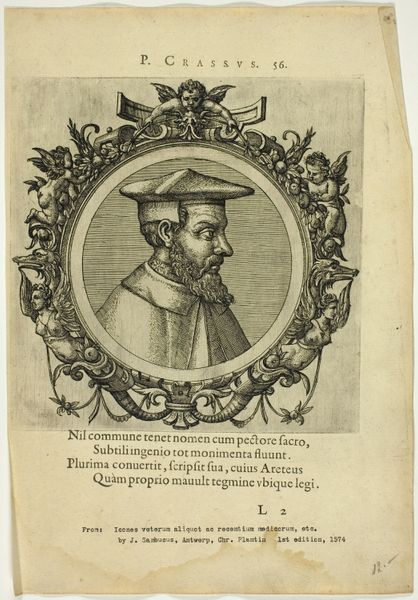
drawing, print, etching, paper
#
drawing
# print
#
etching
#
mannerism
#
paper
#
personal sketchbook
#
sketchbook drawing
#
history-painting
Dimensions: 192 × 205 mm (image/plate); 311 × 217 mm (sheet)
Copyright: Public Domain
Editor: So, this etching, "Portrait of Nicander," possibly from 1574 by Johannes Sambucus, feels so incredibly ornate. The frame almost overwhelms the subject. How do you interpret the image? Curator: The frame *is* key. Note the grotesque masks and natural motifs intertwined. What do those creatures suggest to you? What kind of psychological experience do you think the artist is intending the viewer to have? Editor: They feel...protective, maybe? Guardians? But the text at the bottom seems related to poisons...it’s a bit confusing. Curator: Precisely! Nicander was a Greek poet and physician known for his writings on medicine and toxicology. The image then aims at complex symbolism, exploring both the dangers of the natural world *and* its potential for healing. Notice how the grotesque borders actually contain or protect Nicander’s image, reminding us of humanity's need to defend against both natural and unnatural elements and embrace their ability to heal. Does it tell you about cultural anxieties? Editor: Definitely. It’s a reminder that knowledge of poisonous substances is essential for the health of humankind. Curator: Yes! Think of this print as a container of potent, ambivalent knowledge. This is Mannerism. Consider also that prints made this wisdom available, spreading ideas like medicine across borders, by presenting ideas as mental icons. Editor: So it’s not just a portrait, but a symbol of the importance of facing our fears. Curator: And finding knowledge in the face of mortality. Each element, text, frame, and portrait, work together as a memento mori. Editor: I see the image differently now – thanks. It highlights how crucial facing tough times is in becoming wiser and creating our culture. Curator: Exactly. By looking closely we appreciate its powerful visual arguments that helped define Nicander's era.
Comments
No comments
Be the first to comment and join the conversation on the ultimate creative platform.
